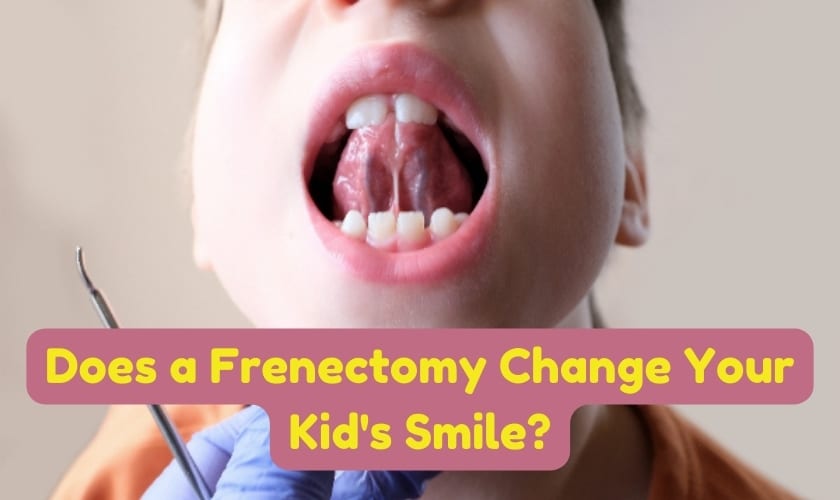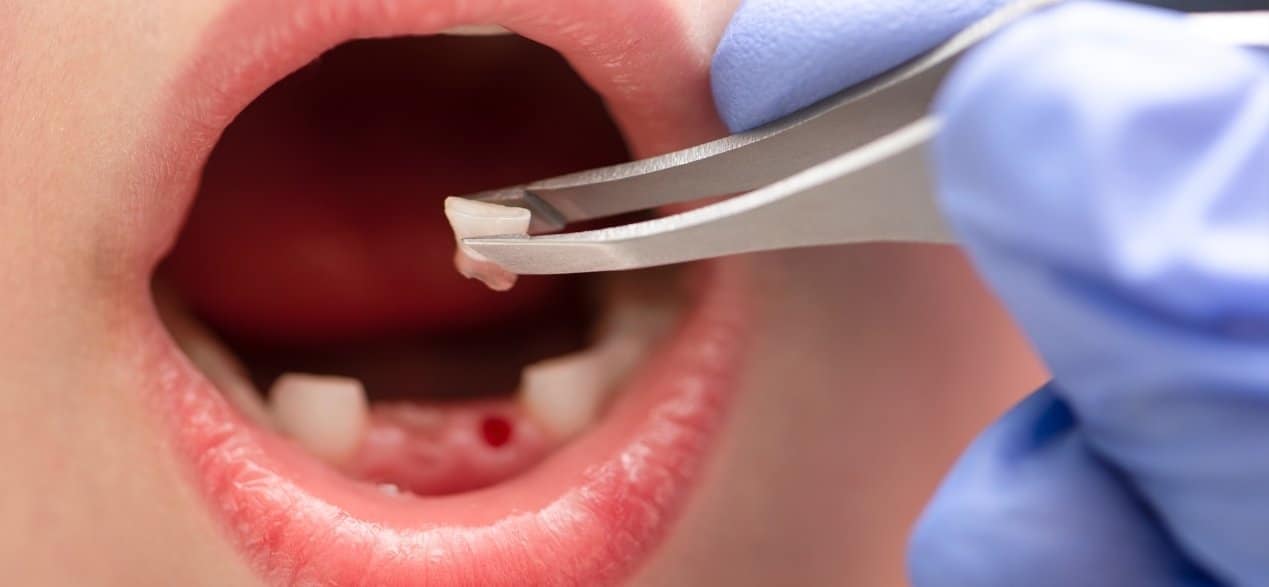Book now

Does a Frenectomy Change Your Kid’s Smile?

Does a Frenectomy Change Your Kid’s Smile?
Seeing your child’s bright, confident smile is one of the greatest joys as a parent. However, when certain oral issues arise, such as problems with the frenulum, they might require intervention. One such solution is a frenectomy. But does a frenectomy change your kid’s smile? Let’s explore what this procedure involves and how it can benefit your child’s oral health and overall well-being.
What is a Frenectomy?
A frenectomy is a simple surgical procedure that involves removing or modifying the frenulum, a small fold of tissue that restricts the movement of the lips or tongue. In children, two common types of frenectomies are performed:
Lingual Frenectomy
- Purpose: Corrects tongue-tie (ankyloglossia), which can hinder speech and eating.
- Procedure: The frenulum under the tongue is released to allow better tongue movement.
Labial Frenectomy
- Purpose: Addresses lip-tie, where the frenulum between the upper lip and gums restricts lip movement, potentially affecting dental development and hygiene.
- Procedure: The frenulum connecting the upper lip to the gums is released.
Signs Your Child Might Need a Frenectomy
As a parent, it’s crucial to recognize the signs that your child might benefit from a frenectomy. Common indicators include:
- Speech Difficulties: Trouble pronouncing certain sounds or delayed speech development.
- Feeding Issues: Difficulty breastfeeding or eating solid foods.
- Dental Problems: Gaps between front teeth or gum irritation.
- Restricted Movement: Limited ability to move the tongue or lips properly.
How a Frenectomy is Performed
A pediatric dentist or an oral surgeon typically performs a frenectomy. The procedure is straightforward and minimally invasive:
Preparation
- Assessment: The pediatric dentist assesses the frenulum and discusses the procedure with the parents.
- Anesthesia: Local anesthesia or a mild sedative is administered to ensure the child’s comfort.
Procedure
- Incision: A small incision is made in the frenulum using a scalpel, laser, or scissors.
- Adjustment: The tissue is adjusted or removed to free the tongue or lip.
Post-Procedure Care
- Healing: The area heals quickly, often within a few days.
- Follow-Up: A follow-up appointment ensures proper healing and function.
Benefits of a Frenectomy
The benefits of a frenectomy go beyond just improving your child’s smile. Here are some key advantages:
Enhanced Oral Function
- Improved Speech: Helps children articulate sounds more clearly.
- Better Eating Habits: Easier breastfeeding and eating solid foods.
Dental Health
- Proper Dental Alignment: Prevents gaps between teeth and promotes better oral hygiene.
- Reduced Risk of Decay: Easier cleaning reduces the risk of cavities and gum disease.
Overall Well-Being
- Increased Confidence: A more functional smile boosts self-esteem.
- Comfort: Reduces discomfort associated with restricted oral movements.
Potential Changes to Your Child’s Smile
A common concern for parents is whether a frenectomy will change their child’s smile. While the procedure can significantly improve functionality and appearance, the impact on the smile is usually positive:
- Natural Appearance: The adjustment is minor and enhances the natural look of the smile.
- Alignment: Helps teeth align properly, creating a more harmonious smile.
What to Expect After a Frenectomy
Understanding what to expect after a frenectomy can ease any worries you might have. Here’s what typically happens post-procedure:
Immediate Aftercare
- Mild Discomfort: Some soreness or swelling is normal and can be managed with pain relief.
- Dietary Adjustments: Soft foods and plenty of fluids are recommended initially.
Healing Process
- Quick Recovery: Healing usually occurs within a week, with noticeable improvements in function.
- Exercises: Your pediatric dentist may recommend simple tongue or lip exercises to enhance healing and functionality.
When to Consult a Pediatric Dentist
If you suspect your child might need a frenectomy, consulting with a pediatric dentist in Tinley Park, IL is the best first step. Here’s when you should consider making an appointment:
- Visible Restrictions: If you notice limited tongue or lip movement.
- Speech Delays: When speech development seems slower than usual.
- Feeding Challenges: Difficulties with breastfeeding or transitioning to solid foods.
- Dental Concerns: Unusual gaps between teeth or frequent gum irritation.
A New Smile, A New Beginning
A frenectomy can be a transformative procedure for your child, addressing issues that might have seemed minor but significantly impacting their daily life. By understanding the benefits and processes involved, you can make an informed decision to improve your child’s oral health and confidence. Trust in the expertise of your Tinley Park pediatric dentist to guide you through this journey, ensuring your child’s smile shines brighter than ever.
With the right care and support, your child’s new smile marks the beginning of enhanced oral functionality and renewed self-assurance. Embrace this change and look forward to the positive outcomes that a frenectomy can bring to your child’s life.







